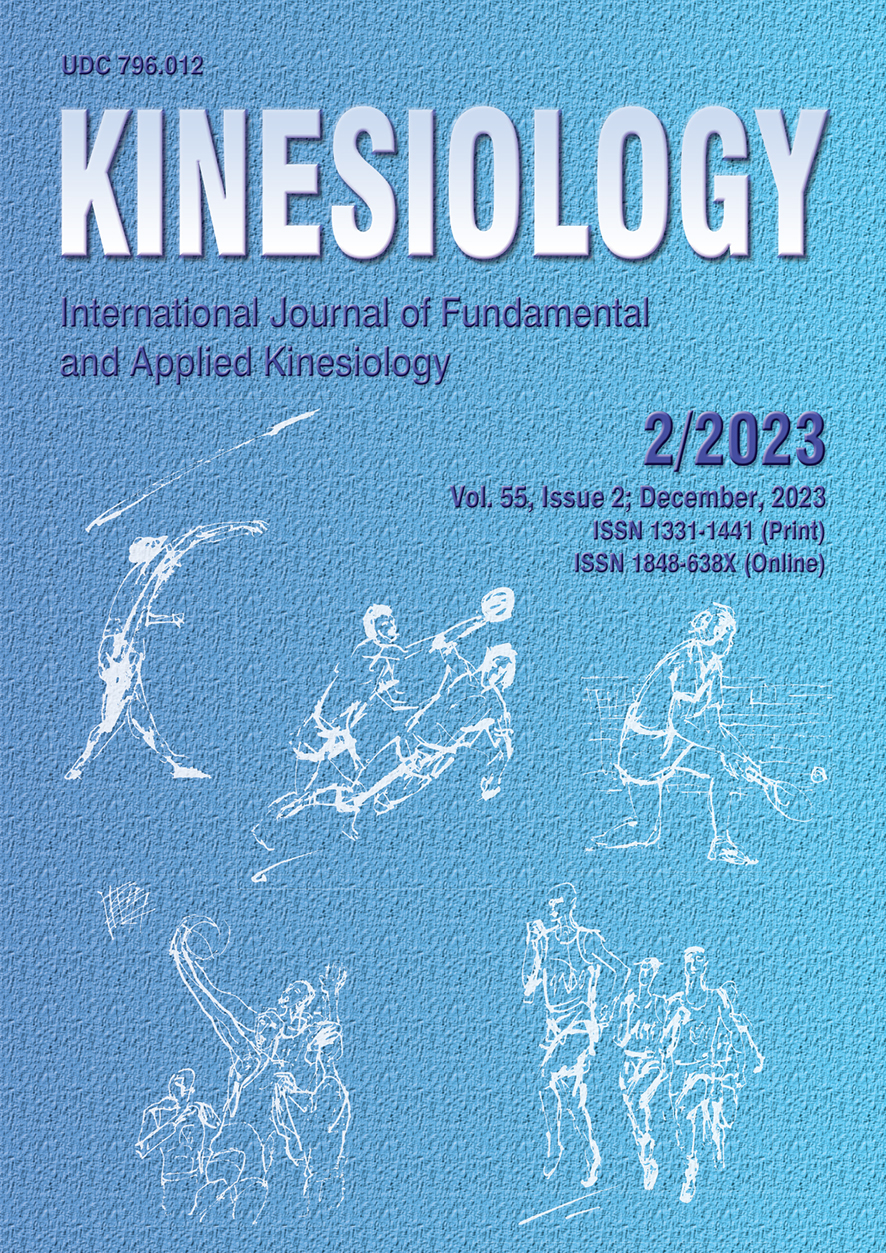THE EFFECT OF MAXIMAL AEROBIC SPEED TRAINING COMBINED WITH SMALL-SIDED GAMES ON PERFORMANCE PARAMETERS IN SOCCER
Abstract
The purpose of this research was to compare the effects of maximal aerobic speed (MAS) training, small-sided games (SSG) training, and combined training (CT) on sprint, agility, lactate accumulation, repeated sprint, aerobic, and anaerobic endurance performances. Thirty under-16 male players participated in a 6-week randomized training study. Pre- and post-training all players completed a test battery involving body composition (body height and Dual Energy X-Ray Absorptiometry-DEXA), sprint tests (10 m, 20 m, and 30 m), Yo-Yo 1 test, Arrowhead agility test, blood lactate test, and Yo-Yo 2 test. A global positioning system (GPS) was used for monitoring. After the pre-tests, the players were randomly assigned to three groups as MAS, SSG, and CT. Mixed two-way ANOVA was used to compare the pre-test and post-test performance of the three groups. While the CT group had higher changes in body composition, repeated sprint, aerobic, and anaerobic endurance parameters compared to the MAS training group (p<.05), the SSG training group had similar changes as the CT group (p>.05). In conclusion, coaches and sports scientists are advised to choose CT for more efficient training, considering the differences between the MAS training and CT methods.
Key words: small-sided games, maximal aerobic speed, game-based training, young male players, football
Downloads
Published
Issue
Section
License

This work is licensed under a Creative Commons Attribution-NonCommercial 4.0 International License.
At Faculty of Kinesiology we recognize that access to quality research is vital to the scientific community and beyond. Kinesiology is non-profit journal and all costs of publishing and peer review process are covered by the publisher itself or other funding sources like Ministry of Science and Education of the Republic of Croatia. Full text papers are also available free of charge at http://hrcak.srce.hr/kineziologija. There are no restrictions on self archiving of any form of paper (preprint, postprint and publisher's version).
Articles are distributed under the terms of the CC BY - NC 4.0
Kinesiology does not charge any fees to authors to submit or publish articles in our journal.


